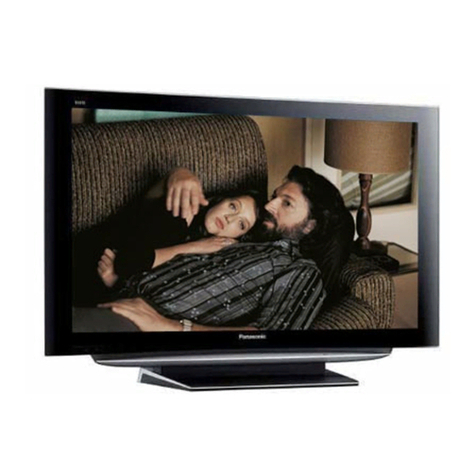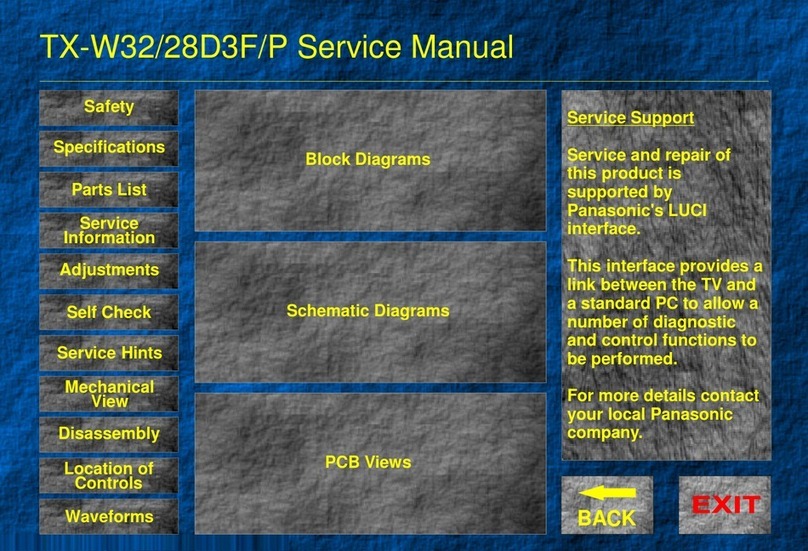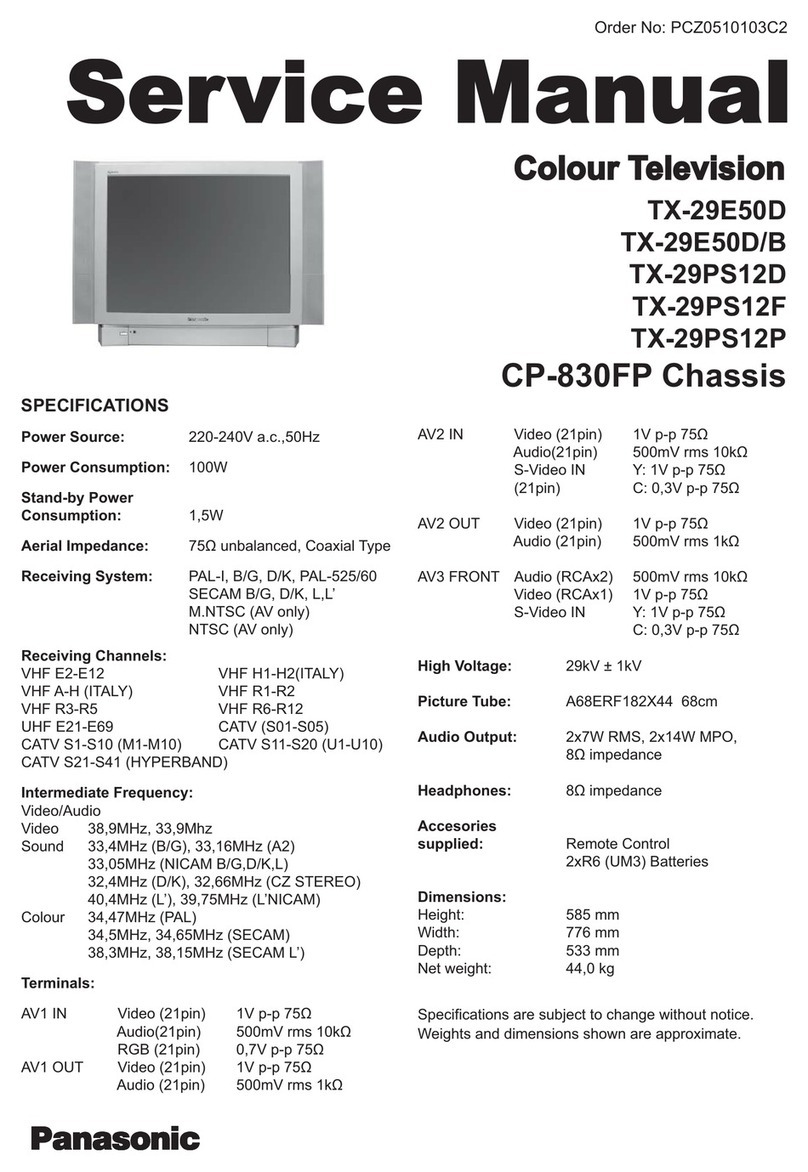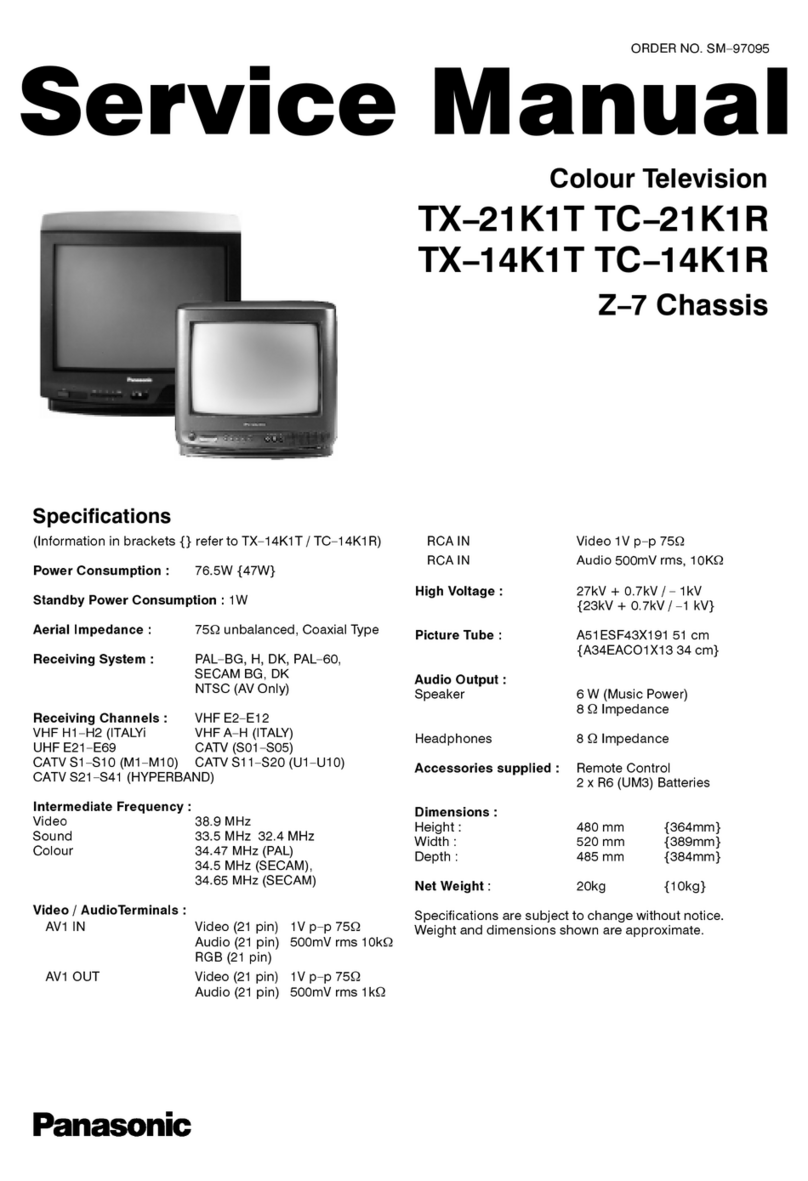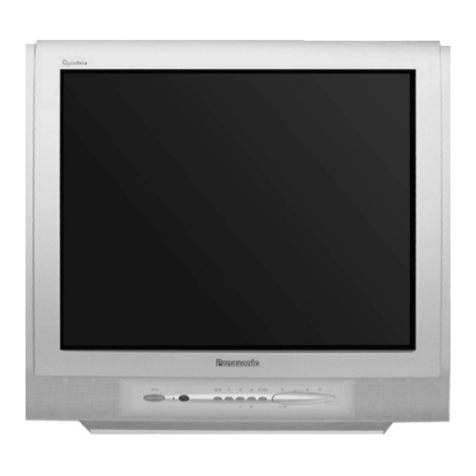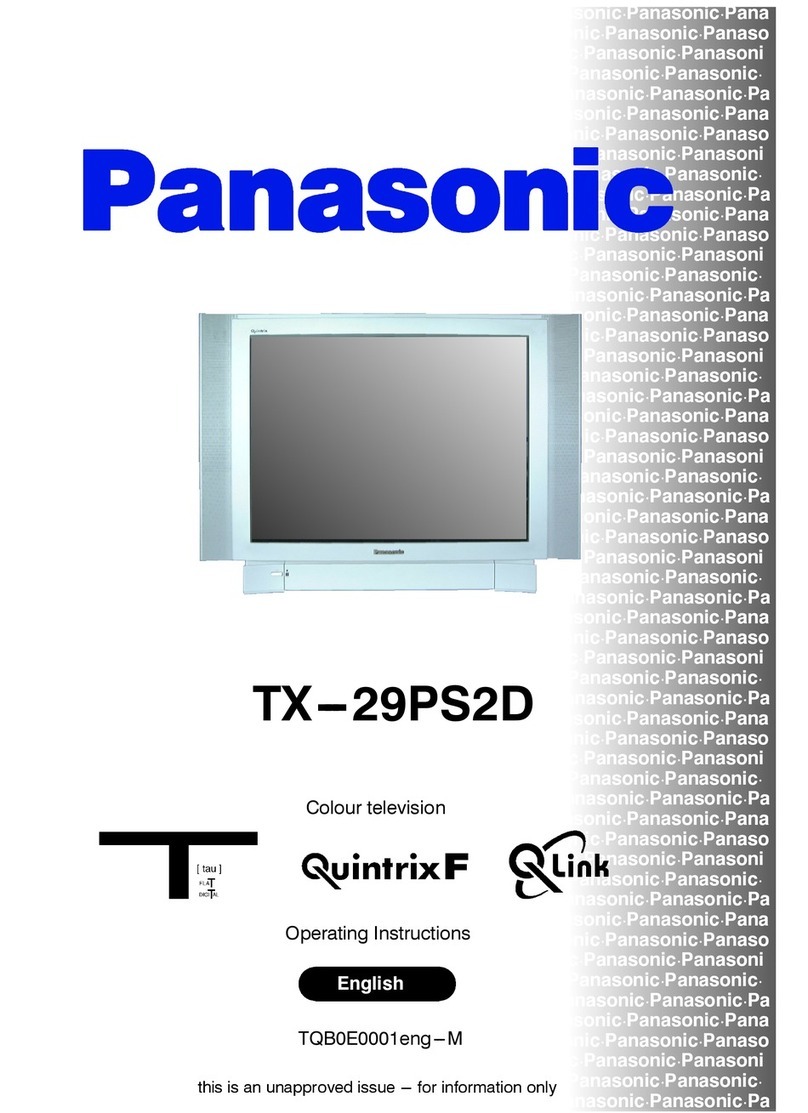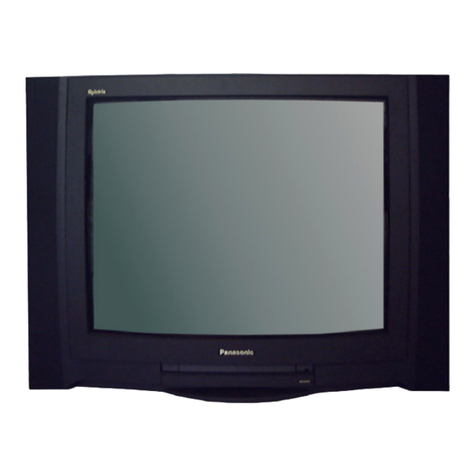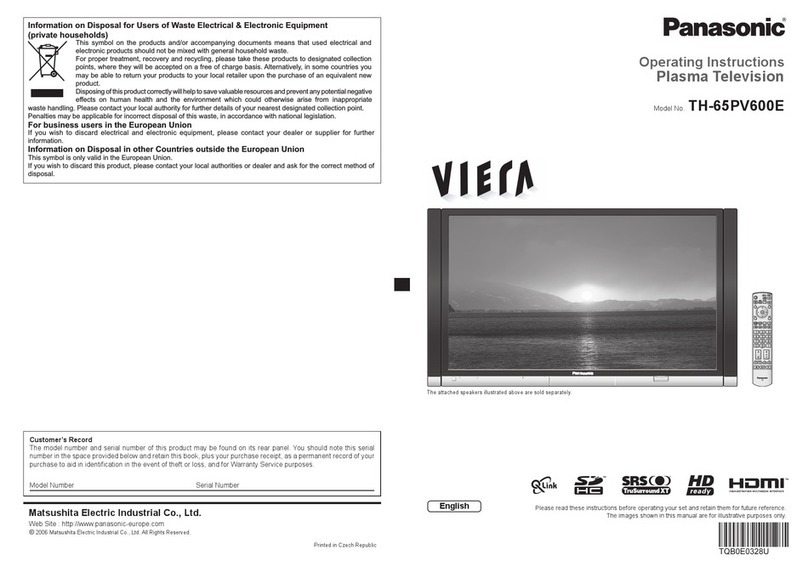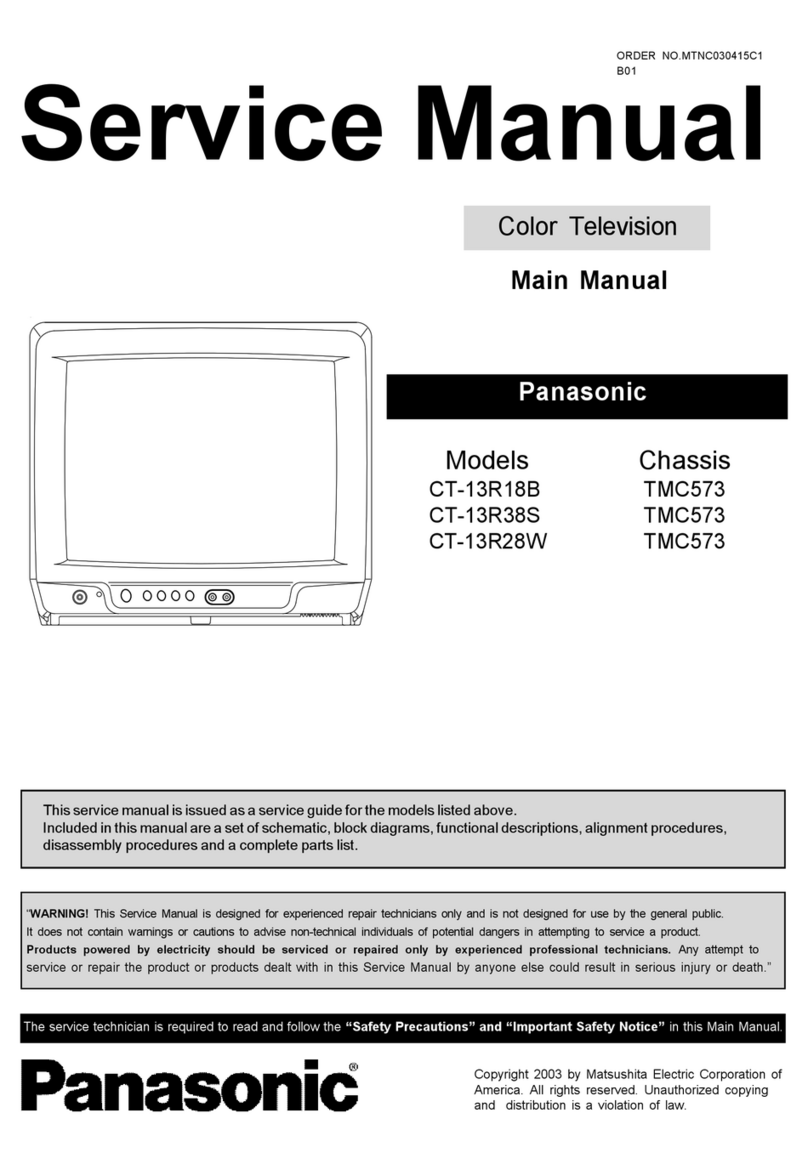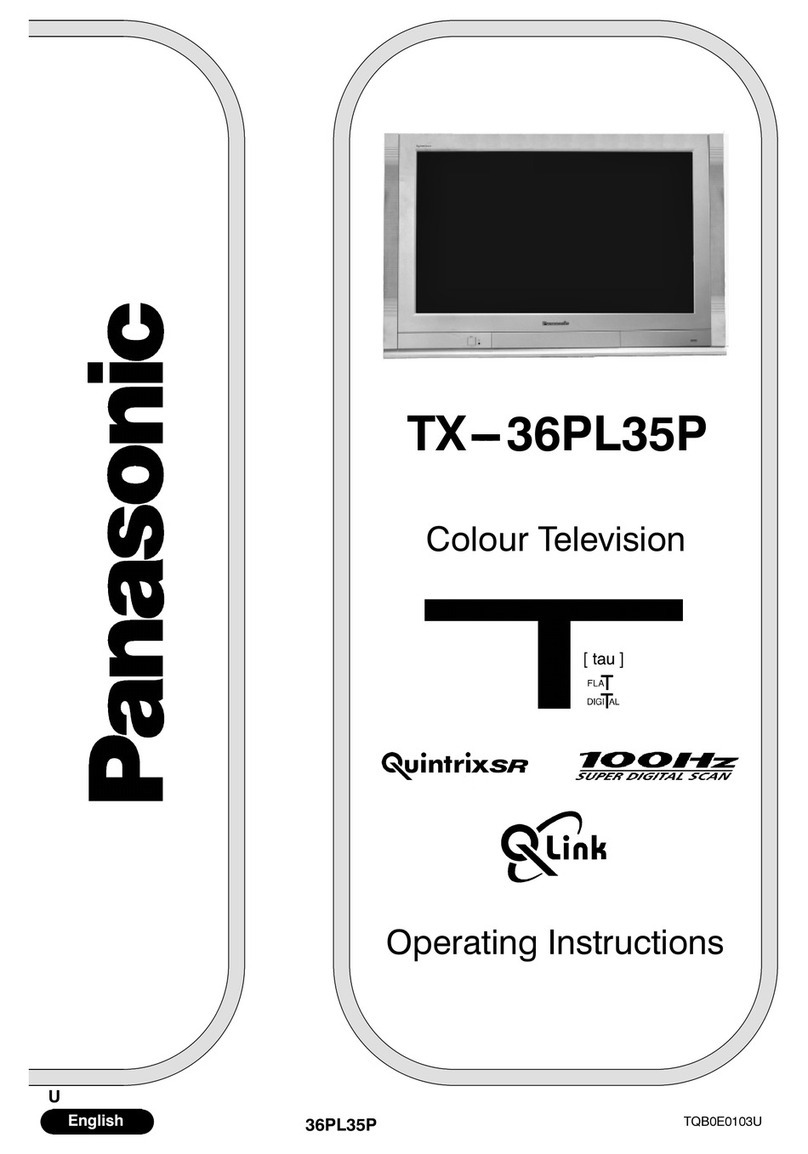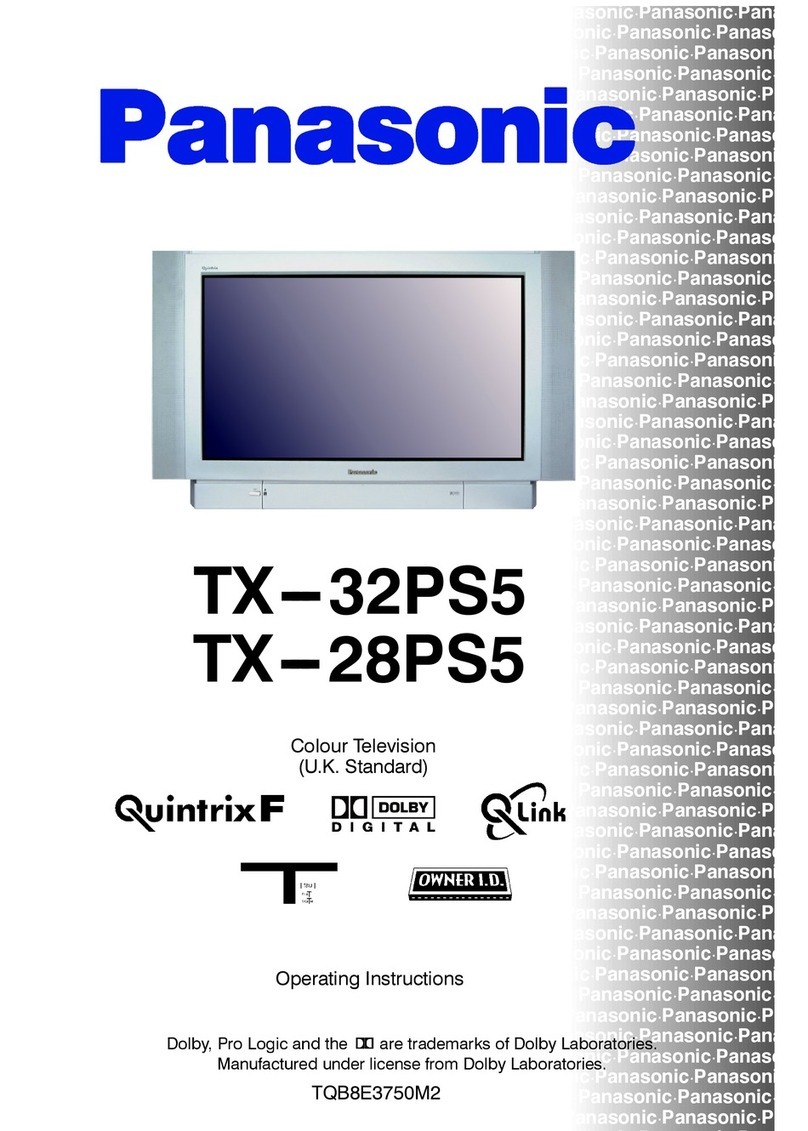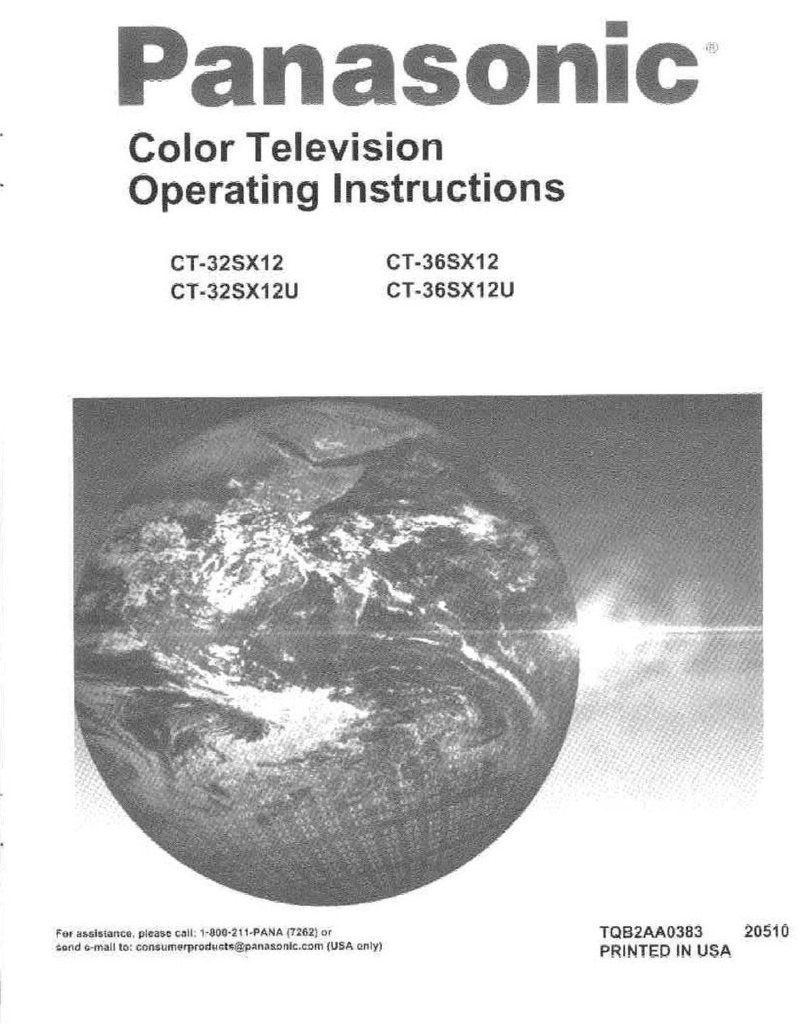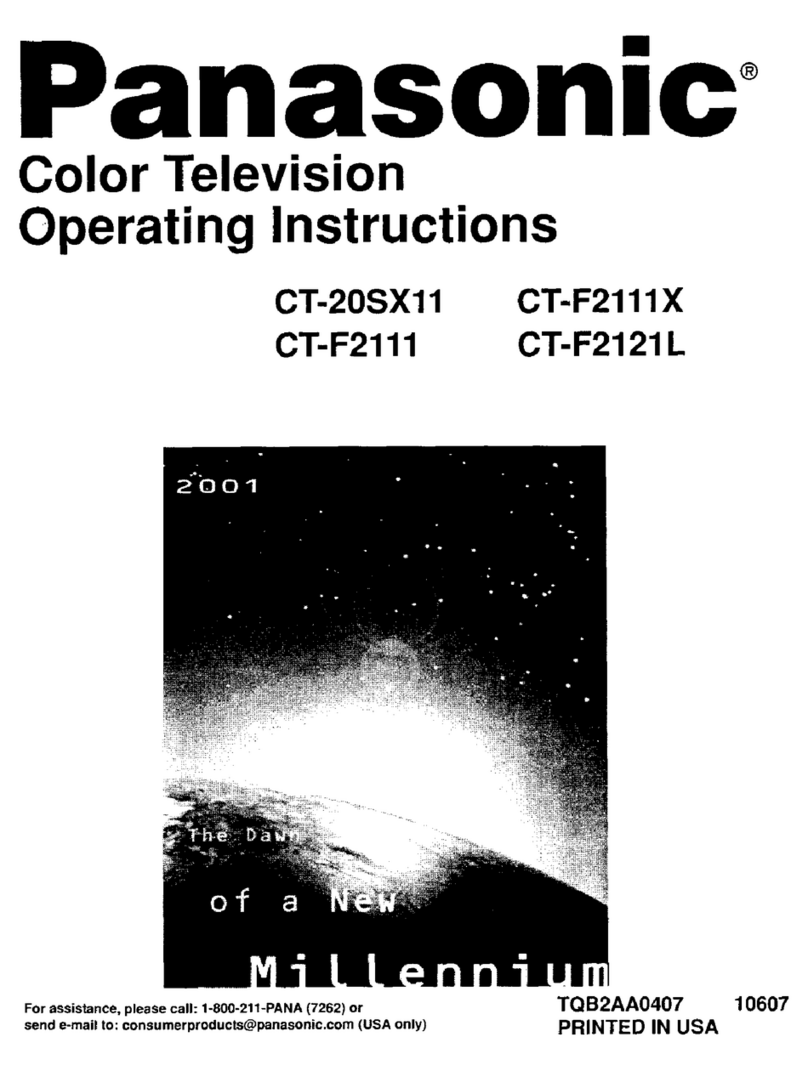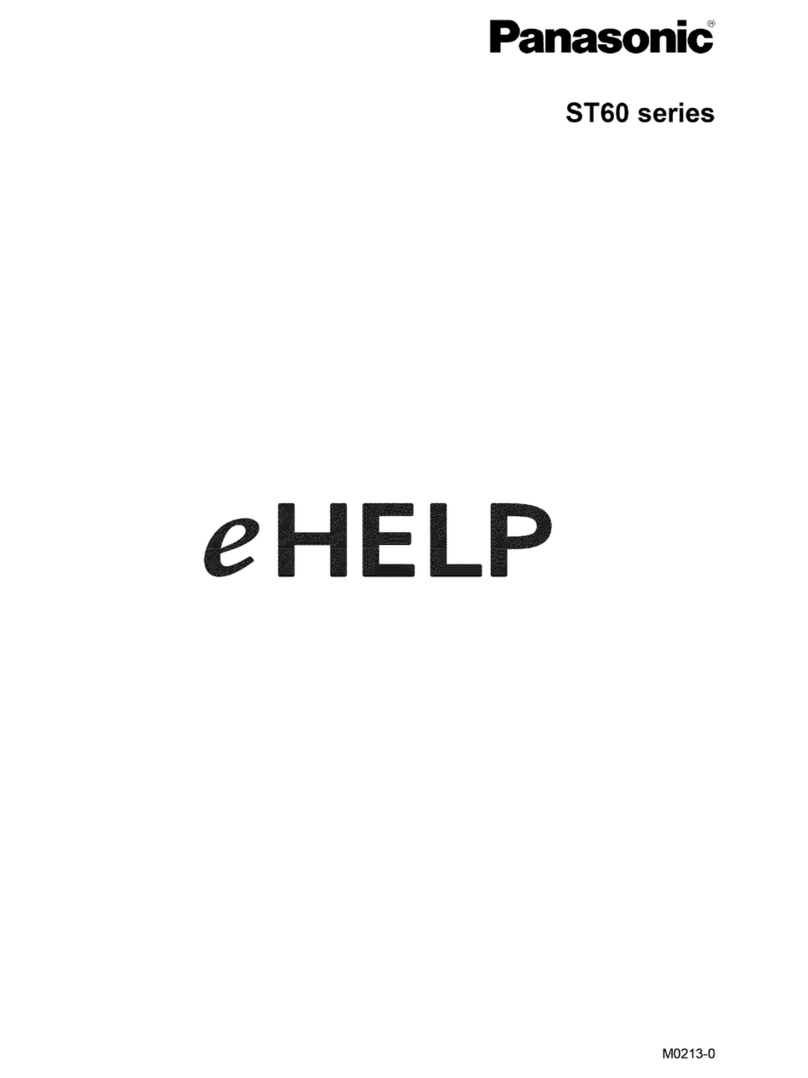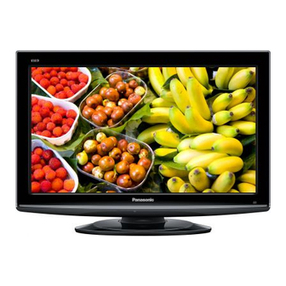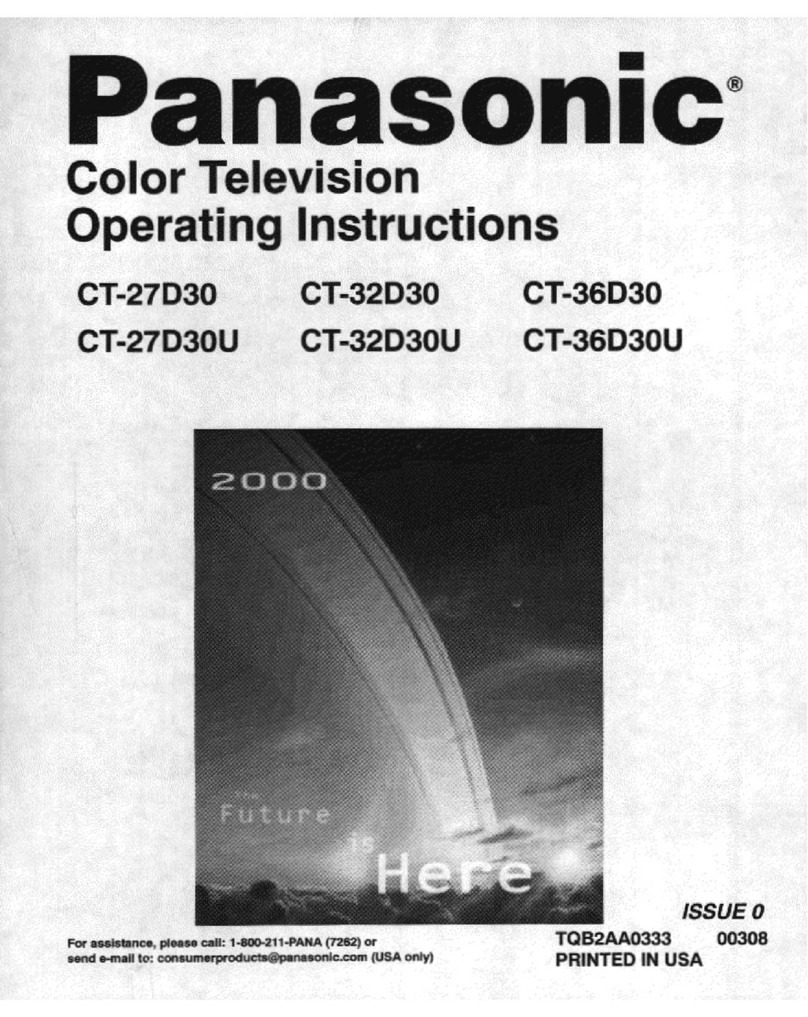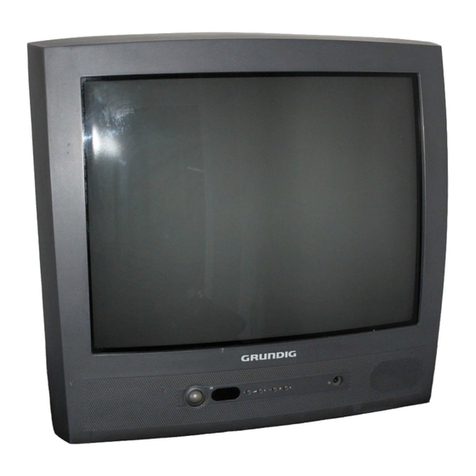
protection. Discharge the picture tube byshorting the anode tochassis ground (not tothe
cabinet ortoothermounting hardware). Whendischarging connect coldground (i.e. dag
ground lead) tothe anode witha wellinsulatedwire oruse a grounding probe.Avoidprolonged
exposure at close range tounshieldedareas of the picture tube toprevent exposure tox ray
radiation.
The test picture tube usedforservicing the chassis at the benchshouldincorporate safety
glass and magnetic shielding. The safetyglass provide shielding forthe tube viewing area
against x rayradiation as well as implosion. The magnetic shieldlimits the x rayradiation
around the bell of the picture tube inaddition tothe restricting magnetic effects. Whenusing a
picture tube test jigforservice, ensure that the jigis capable of handling 50kV without causing
x rayradiation.
Before returning a servicedreceivertothe owner, the service technicianmust thoroughlytest
the unit toensure that is completelysafe tooperate. Donot use a line isolation transformer
whentesting.
Leakage current coldcheck
Unplug the A.C. cordand connect a jumperbetweenthe twoplug prongs.Measure the
resistance betweenthe jumperedAC plug and expose metallic parts suchas screwheads,
antenna terminals, control shafts, etc. If the exposedmetallic part has a returnpathtothe
chassis, the reading shouldbe between240k and 5.2M . If the exposedmetallic part does
not have a returnpathtothe chassis, the reading shouldbe infinite.
Leakage current hot check
Plug the AC corddirectlyintothe AC outlet. Donot use anisolation transformerduring the
check.
Connect a 1.5k 10 watt resistorinparallel witha 0.15 Fcapacitorbetweenanexposed
metallic part and ground. Use earthground, forexample a waterpipe.
Using a DVM witha 1000 ohms/volt sensitivityorhigher, measure the AC potential across the
resistor.
Repeat the procedure and measure the voltage present withall otherexposedmetallic parts.
Verifythat anypotential does not exceed0.75 volt RMS. A leakage current tester(sucha
Simpson model 229, Sencore model PR57 orequivalent) maybe usedinthe above procedure, in
whichcase anycurrent measure must not exceed0.5 milliamp. Ifanymeasurement is out of the
specifiedlimits, there is a possibilityof a shock hazardand the receivermust be repairedand
recheckedbefore it is returnedtothe customer.
Hot check circuit
3
